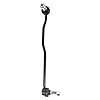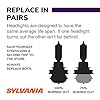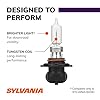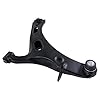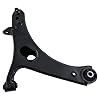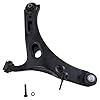Table of Contents
If you’re asking “are car covers bad for your car?” you’ve stumbled upon one of the most heated debates in automotive care. The answer isn’t a simple yes or no—it’s a nuanced “it depends.” When used correctly, car covers provide invaluable protection against environmental hazards, but when misused, they can indeed become instruments of damage that harm your vehicle’s finish.
The truth lies in understanding the critical factors that separate protective covering from paint-damaging hazards: proper fit, correct material selection, meticulous application techniques, and consistent maintenance. This comprehensive guide will unpack both the benefits and potential pitfalls of car cover usage, providing you with the expert knowledge needed to make an informed decision about protecting your valuable automotive investment.
The Protective Benefits: How Car Covers Help Your Car
When selected and used appropriately, quality car covers offer multiple layers of protection that can significantly extend your vehicle’s lifespan and preserve its appearance.
Shielding Against Environmental Damage
Your car faces constant assault from environmental elements every day, whether parked outdoors or stored inside. A properly selected car cover acts as a first line of defense against these threats.
UV Radiation Protection: The sun’s ultraviolet rays are one of the most significant threats to your vehicle’s exterior. Prolonged exposure causes paint to oxidize and fade, leaving your car looking dull and aged. High-quality car covers with UV-resistant properties block these harmful rays, preserving your paint’s color and gloss far longer than uncovered vehicles . This protection extends to your interior as well when windows are covered, preventing dashboard cracking and upholstery fading.
Weather and Moisture Defense: Car covers provide crucial protection against rain, snow, and humidity. Quality covers are engineered with moisture-wicking materials that keep your vehicle dry, dramatically slowing the rusting and oxidation processes . This is particularly vital if you live in coastal regions with salty air, which accelerates corrosion, or in areas with high rainfall where moisture is constantly present.
Contaminant Barrier: Beyond the obvious threats, your car’s finish faces daily assault from airborne contaminants. Bird droppings, tree sap, pollen, and industrial fallout can etch into your clear coat if not removed promptly. A car cover creates a physical barrier that prevents these substances from ever contacting your paint, saving you from constant cleaning and potential damage .
Preventing Physical Damage
Beyond environmental protection, car covers serve as a physical barrier against various forms of mechanical damage.
Scratch and Dent Prevention: Parking outdoors exposes your vehicle to potential impacts from shopping carts, bicycle handlebars, opening car doors, and even children’s toys. While a car cover won’t prevent major impacts, it can absorb minor contact that might otherwise leave scratches or dings in your paint . The soft inner layer of a quality cover cushions against these everyday hazards.
Debris Protection: Falling branches, acorns, hail, and wind-blown debris pose real risks to your vehicle’s finish. A multi-layered car cover provides a buffer zone that disperses the energy from such impacts, potentially preventing chips, dents, and scratches that would otherwise require expensive repairs .
Theft Deterrence: While not their primary function, car covers offer a secondary benefit of deterring casual thieves. The extra time and effort required to remove a properly secured cover can discourage potential burglars looking for easy targets . Additionally, covers conceal valuable items left in your vehicle and obscure the model and features of your car, making it less appealing to thieves scouting specific targets.
Preserving Value and Reducing Maintenance
The cumulative protective effects of regular car cover usage translate directly into financial benefits and reduced maintenance efforts.
Resale Value Preservation: A vehicle protected from environmental damage, UV fading, and physical scratches will inevitably maintain a higher resale value. The difference between a faded, scratched exterior and a well-preserved one can amount to thousands of dollars at trade-in time . The relatively small investment in a quality car cover pays significant dividends when it comes time to sell or trade your vehicle.
Reduced Cleaning Frequency: By keeping your car cleaner for longer periods, car covers reduce the need for frequent washing . This not only saves time and money but also minimizes the potential for wash-induced swirl marks that occur even with proper washing techniques. With a cover, you’ll find your vehicle stays presentation-ready with far less effort between cleanings.
Long-Term Storage Benefits: For collectors, seasonal vehicle owners, or those anticipating extended periods of non-use, car covers are practically essential. They protect against dust accumulation, pest intrusion, and gradual environmental degradation that occurs even in garage settings . Proper covers allow for air circulation while blocking contaminants, making them ideal for preservation during storage.
The Potential Damage: When Car Covers Harm Your Car
Despite their protective potential, car covers can indeed cause significant damage when used incorrectly or with inappropriate products. Understanding these risks is crucial to avoiding them.
Paint Marring and Micro-Scratching
The most common complaint from car cover users is the unintentional damage caused to their vehicle’s finish—damage that often contradicts the very reason they purchased the cover.
The Dirt Trapping Problem: The single greatest threat to your paint from car cover usage is trapped debris. When any amount of dust, sand, or grit becomes caught between your cover and paint surface, the slightest movement creates a sandpaper-like effect . Wind causes the cover to shift minimally, rubbing these particles across your clear coat and creating countless micro-scratches and swirl marks that dull your finish over time .
Improper Removal Techniques: Even with a perfectly clean car and cover, improper removal can introduce scratches. Dragging a cover across painted surfaces, allowing edges to touch the ground, or failing to properly fold the cover during removal all risk introducing contaminants or creating friction that mars your finish . These techniques require a methodical approach that many users find cumbersome over time.
Inner Liner Quality Issues: Not all car cover interiors are created equal. Some cheaper covers feature rough inner linings or exposed seams that can directly abrade your paint, even without trapped contaminants . These quality issues are often not apparent until the damage has already occurred, making initial selection critically important.
Moisture and Humidity Trapping
Perhaps the most insidious car cover danger comes from improper moisture management, which can create problems far worse than those the cover was meant to prevent.
The Condensation Cycle: When temperature fluctuations occur—as they do daily—moisture in the air can condense on your car’s surface. A non-breathable cover traps this moisture against your paint, creating a humid microenvironment that promotes mold, mildew, and rust . This is particularly problematic with plastic or vinyl covers marketed as “100% waterproof,” which prevent moisture from escaping .
Hidden Corrosion Development: Unlike visible scratch damage, moisture-related problems often develop out of sight. Rust can begin forming in seams, under trim, and around the underbody long before it becomes visible to the casual observer . By the time these issues surface, significant damage may have already occurred, requiring expensive repairs.
Fabric Saturation Issues: During extended precipitation, even breathable covers can become saturated. If not removed and properly dried, a damp cover placed against your vehicle will transfer moisture to the paint surface, accelerating oxidation and potentially causing water spots that etch into the clear coat .
Poor Fitment and Material Issues
Not all car covers provide equal protection, and choosing the wrong product for your vehicle or environment guarantees unsatisfactory results.
Universal vs. Custom Fit Problems: Ill-fitting covers, particularly “universal” sizes that don’t match your specific vehicle contours, create multiple issues. Excess material flaps in wind, scrubbing paint surfaces . Tight areas stretch thin, reducing protection. Loose sections pool water and debris, while tight sections strain seams and risk tearing .
Incorrect Material Selection: Using indoor covers outdoors exposes them to UV degradation and weather elements they weren’t designed to handle . Conversely, heavy outdoor covers used indoors trap too much heat and lack the breathability needed for garage environments. Each setting demands specific material properties for optimal protection.
Component Damage Risks: Poorly designed covers without proper mirror pockets, antenna patches, or spoiler accommodations can place undue stress on these components . Constant rubbing against sharp edges or protrusions can wear through both the cover and the underlying paint, creating focal points for corrosion.
Table: Car Cover Material Comparison Guide
| Material Type | Best Use Environment | Key Advantages | Potential Drawbacks |
|---|---|---|---|
| Multi-Layer Polyester | Outdoor All-Weather | Excellent UV and water resistance; durable | Can be less breathable; often heavier |
| Breathable Microfiber | Indoor & Sheltered Outdoor | Gentle on paint; good breathability | Limited water resistance |
| Cotton-Blend Fabrics | Indoor Storage | Soft, breathable, affordable | Poor weather resistance; shrinks when wet |
| Plastic/Vinyl | Short-Term Outdoor | Maximum water protection | Traps moisture; damages paint; non-breathable |
Critical Factors That Determine If a Car Cover Will Damage Your Car
The line between protection and damage boils down to several key factors that every car owner must understand before investing in a cover.
Quality and Fitment: Your First Line of Defense
The old adage “you get what you pay for” applies perfectly to car covers, where quality construction and proper fit are non-negotiable for safe protection.
Custom-Fit Imperative: A properly fitted cover should hug your vehicle’s contours without excessive tightness or looseness. Custom-fit covers, patterned specifically for your make and model, provide uniform tension that prevents wind flapping while accommodating mirrors, antennas, and spoilers . The investment in a quality custom cover pays dividends in both protection and peace of mind.
Material Quality Indicators: High-quality car covers feature soft, non-abrasive inner linings, reinforced stress points, UV-resistant outer layers, and adequate breathability . These materials should feel substantial without being excessively heavy, and should come from reputable manufacturers willing to stand behind their products with warranties.
Security Feature Necessity: Proper tie-down systems—whether built-in grommets, buckle straps, or undercarriage cables—are essential for outdoor use . These features prevent wind from lifting covers and causing the abrasive movement that damages paint. A cover without secure fastening is essentially a giant abrasive cloth waiting for the next breeze.
Proper Usage Techniques: The Human Element
Even the finest car cover will cause damage if used incorrectly, making technique as important as the product itself.
The Clean Car Mandate: The single most important rule of car cover usage is to never cover a dirty vehicle . Even dust that appears minimal to the naked eye can become an abrasive agent when trapped against paint. Always wash and completely dry your vehicle before applying its cover, paying particular attention to horizontal surfaces where debris accumulates.
Application and Removal Protocol: Proper technique minimizes contact between the cover and painted surfaces. The roll-on, roll-off method is widely recommended: carefully unroll the cover from front to back or roof to ground, and reverse the process during removal . Avoid dragging any portion of the cover across paint, and never allow the exterior surface to contact the ground then come into contact with your vehicle.
Drying and Storage Procedures: Never store a damp cover on your vehicle or fold it while wet . Moisture trapped during storage creates mold and transfers contaminants to the inner surface. Always ensure your cover is completely dry before storage, and use breathable storage bags rather than plastic containers that can trap residual moisture.
Environmental Considerations
Where and how you use your car cover significantly impacts its effectiveness and safety.
Climate-Specific Material Selection: Your local climate should dictate cover choice. Humid environments demand highly breathable materials, while sunny regions require superior UV protection . Areas with frequent precipitation need water-resistant yet breathable fabrics, while dusty locales benefit from tight-weave materials that block fine particles.
Usage Frequency Factors: Vehicles used daily may not be ideal candidates for covers due to the constant application and removal cycle, which increases opportunities for improper technique . Cars used seasonally or weekly benefit more from covers, as the protection-to-effort ratio is more favorable.
Parking Location Assessment: Evaluate your parking situation realistically. Vehicles under trees need protection from sap and bird droppings but face greater moisture retention from shade . Cars parked in open areas require superior UV protection and wind security. Urban environments demand protection against incidental contact and pollution.
Expert Tips for Safe Car Cover Usage
Maximize protection while minimizing risks with these professional recommendations for car cover success.
Selecting the Right Cover for Your Needs
Making the correct initial selection prevents countless problems down the road.
Climate-Appropriate Choices: Match your cover to local conditions. For rainy climates, select water-resistant yet breathable materials. For intense sun, prioritize UV protection. For humid areas, emphasize breathability above all other factors . Don’t assume one cover fits all situations—be honest about your primary use case.
Investment Mentality: View a car cover as a long-term investment in your vehicle’s preservation. The $20 discount store cover will likely cost you far more in paint correction than the $200-$400 quality custom cover . Quality covers last for years with proper care, making their effective cost quite reasonable when amortized over their lifespan.
Feature Prioritization: Identify which features matter most for your situation. Daily drivers need easy application/removal. Outdoor parking demands security features. Show cars require the softest inner linings. Long-term storage vehicles benefit from maximum breathability. Knowing your priorities helps narrow the overwhelming selection available.
Proper Maintenance and Care
Your car cover requires regular maintenance to perform effectively without causing damage.
Regular Cleaning Schedule: Clean your cover every 1-3 months depending on usage and environment . Follow manufacturer instructions, but generally use mild detergent, cold water, and air drying. Avoid harsh chemicals, fabric softeners, and machine drying unless specifically approved, as these can degrade protective treatments.
Inspection Routines: Regularly examine your cover for interior contamination, seam integrity, and material degradation. Look for embedded debris in the inner liner, which requires immediate cleaning. Check for torn seams or worn areas that could compromise protection. Detect fading or waterproofing failure early to plan for replacement.
Proper Storage Protocols: When not in use, store your cover in a breathable bag in a cool, dry location . Avoid plastic containers that trap moisture and promote mildew. Never store a cover while damp, as this will permanently compromise the inner liner and potentially transfer mold to your paint.
Avoiding Common Pitfalls
Steer clear of these frequently encountered mistakes that turn protective measures into damaging ones.
Temperature Awareness: Never cover a hot vehicle immediately after driving . The trapped heat can bake onto your paint and accelerate interior deterioration. Allow your car to cool completely before covering, typically 15-30 minutes depending on ambient temperatures.
Weather Adaptation: Remove covers during extreme weather when possible. Hurricane-force winds can turn even well-secured covers into destructive flapping canvases. Heavy snow accumulation can strain seams and frame components. Sometimes, no cover is better than one causing damage during unusual conditions.
Realistic Expectations: Understand that no car cover provides perfect protection without any maintenance or care requirements. All covers require proper technique, regular cleaning, and occasional replacement. The goal is damage reduction, not elimination, and accepting this reality helps maintain proper perspective on your cover’s role in vehicle care.
Conclusion: Making an Informed Decision About Car Covers
So, are car covers bad for your car? The definitive answer is that they can be either tremendously beneficial or surprisingly damaging, with the outcome determined by your choices and practices. High-quality, properly fitted covers used with correct technique provide invaluable protection against environmental hazards, physical damage, and value depreciation. Conversely, poor-quality covers, improper fitment, and incorrect usage can indeed cause significant harm to your vehicle’s finish.
The decision to use a car cover ultimately comes down to your specific circumstances, commitment to proper usage, and willingness to invest in quality protection. For vehicles subjected to long-term storage, harsh environmental conditions, or limited use, a well-chosen cover is undoubtedly beneficial. For daily drivers where the constant application and removal cycle introduces regular opportunities for error, the benefits may not justify the risks and effort.
Your vehicle deserves the best protection you can reasonably provide. If you select a quality cover matched to your environment, maintain both your vehicle and cover meticulously, and employ proper techniques consistently, you’ll join the thousands of satisfied car owners who successfully use covers to preserve their automotive investments for years to come.

